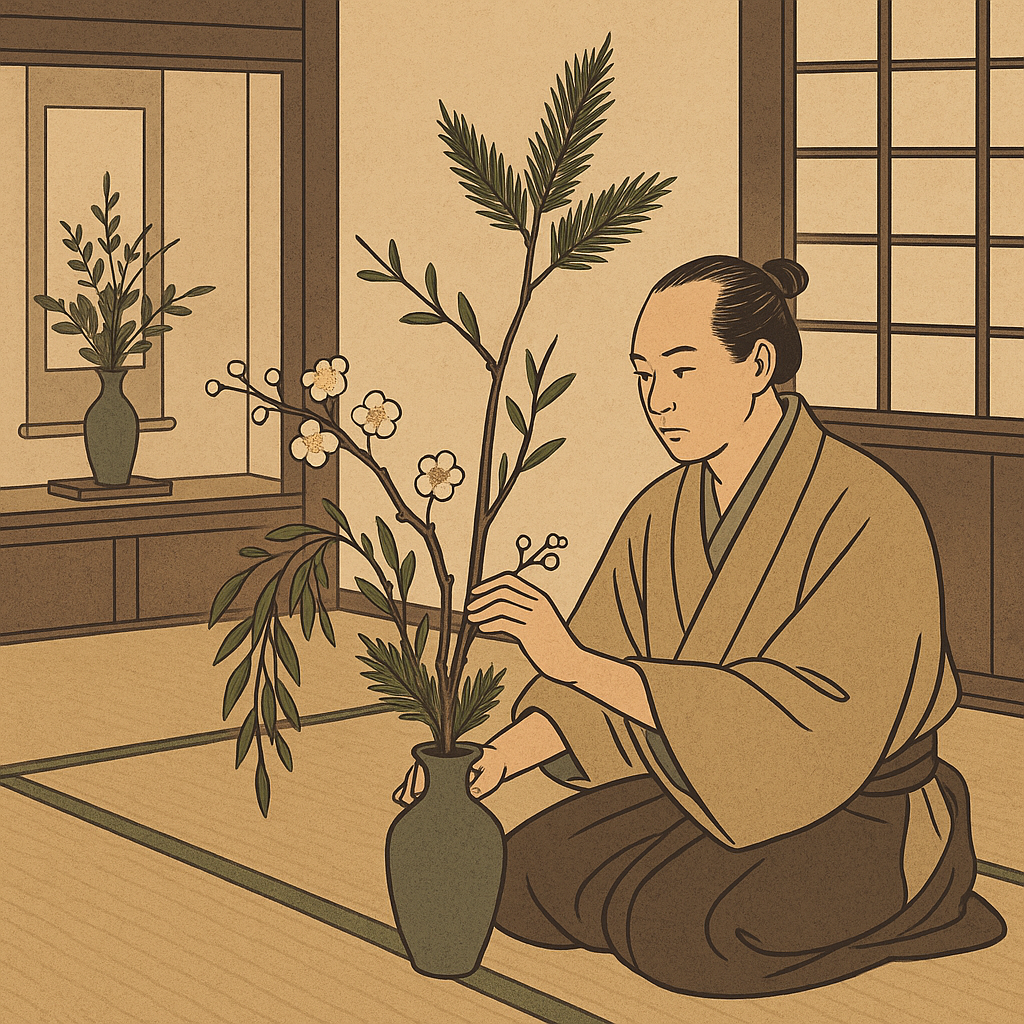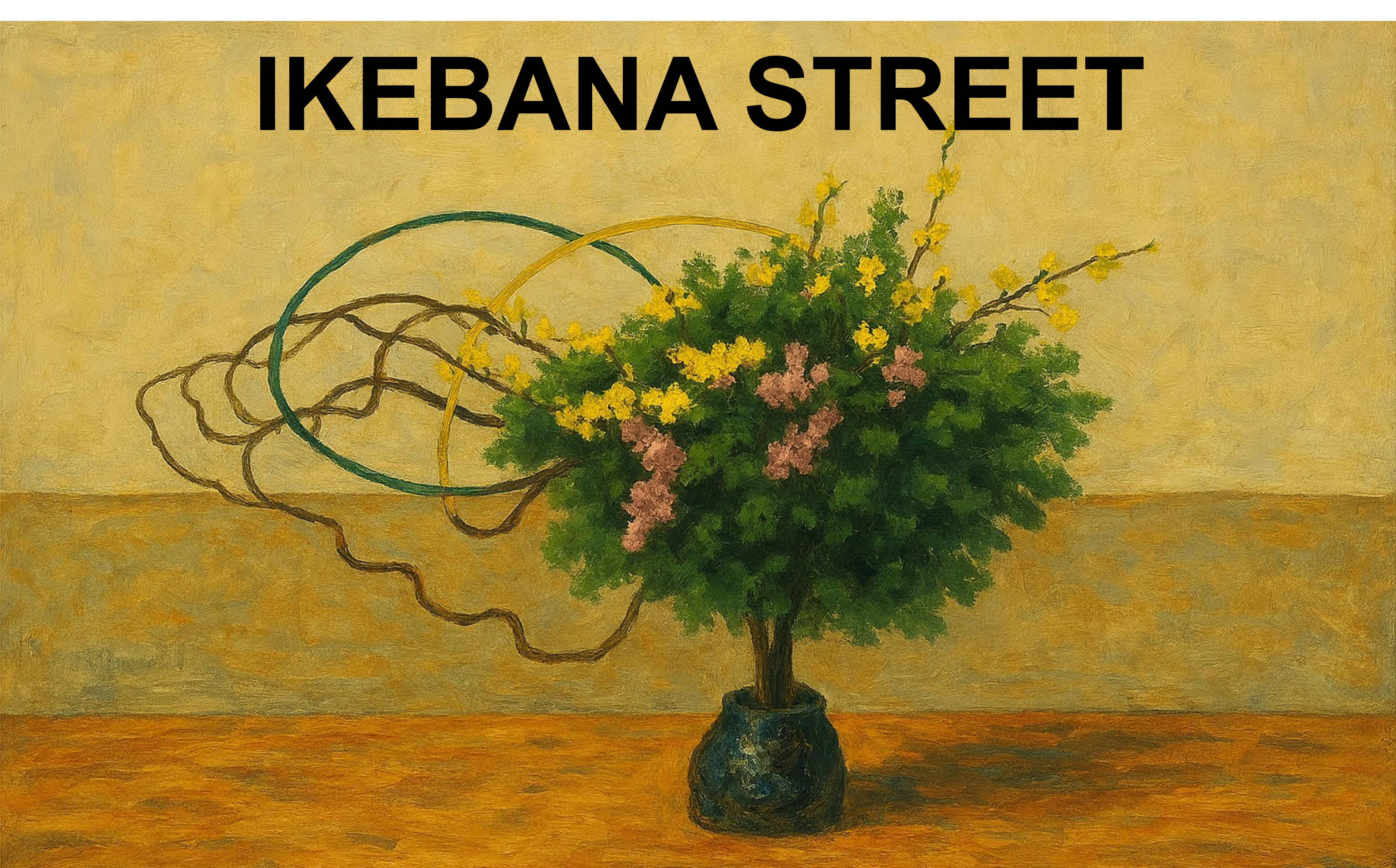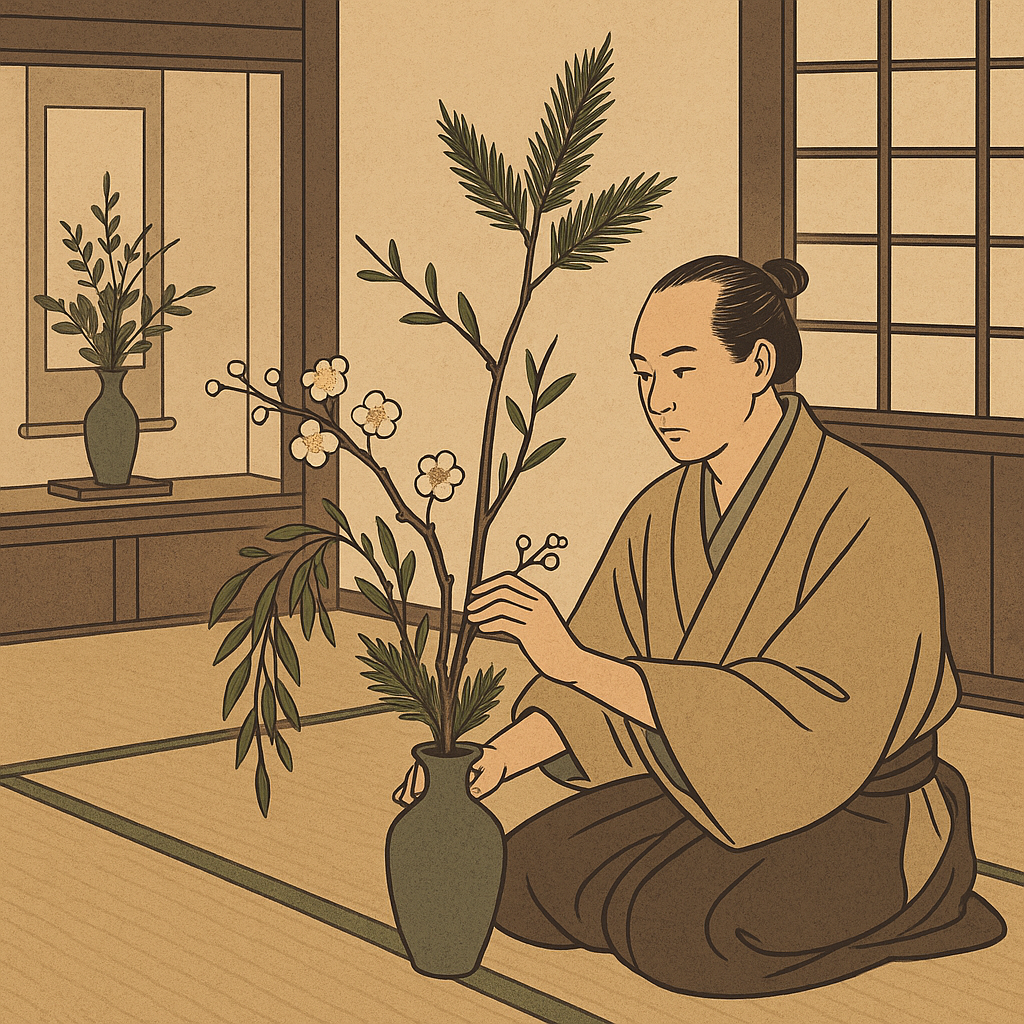Part 3: Ikebana in the Edo Period – Expansion into Popular Culture and the Rise of Schools

The Edo period (1603–1868) marked a significant transition for ikebana, as it spread from the aristocracy and warrior class into the lives of townspeople. With prolonged peace under Tokugawa rule, economic development and publishing culture flourished, allowing art and learning to reach broader segments of society.
From Rikka to Shōka – Evolution of Form
The Rikka (standing flowers) style, formalized in the Muromachi period, featured a tall central branch representing heaven and a symmetrical structure symbolizing the universe. In the early Edo period, this elaborate form was simplified into Shōka, a more compact and refined style emphasizing seasonal expression and natural vitality. Shōka used fewer materials, making it suitable for everyday interiors, and it gradually gained popularity among the samurai and wealthy merchant classes.
Popularization Through Town Culture and Publishing
From the late 17th century onward, the rising urban merchant class began to engage with cultural pursuits. In this climate, ikebana became more accessible, aided by the publication of illustrated guides by the Ikenobō school, such as “Rikka Zue narabi ni Sunamono” (1673) and “Shinsen Heika Zui” (early 19th century). These books introduced flower arrangement styles and principles to a wider audience.
Displaying flowers in the tokonoma alcove of homes became a custom in city life, especially in merchant households. Ikebana served not just as decoration, but as a symbol of hospitality and refined cultural taste.
Formation of Schools and the Iemoto System
During the Edo period, various ikebana schools were established, with the Ikenobō school leading the way from its base at Rokkakudō Temple in Kyoto. Officially recognized by the shogunate, Ikenobō formalized a system of instruction through kaden-sho (flower manuals) and began issuing teaching licenses. This institutionalization helped transform ikebana into a discipline that could be studied, taught, and passed down through generations.
Path Toward Popular Art
Ikebana in the Edo era became integrated into daily life among samurai, artisans, temple communities, and urban elites. While it had not yet become a fully widespread hobby for the masses, the custom of appreciating seasonal flowers indoors took root. This set the stage for ikebana’s greater democratization in the Meiji era and beyond.
→ In the next article, we will explore how ikebana entered the modern era, embraced new styles, and welcomed the birth of contemporary schools like Ohara-ryū and Sōgetsu-ryū.


